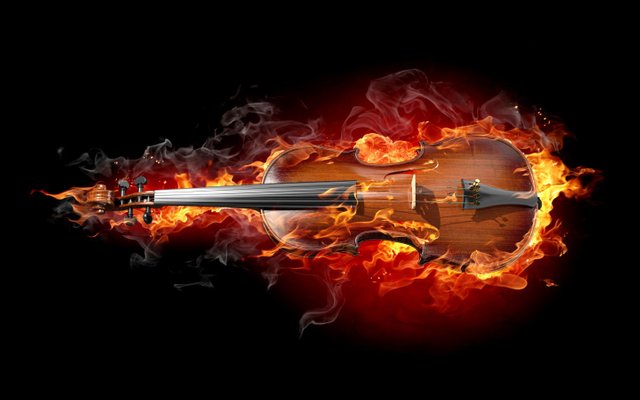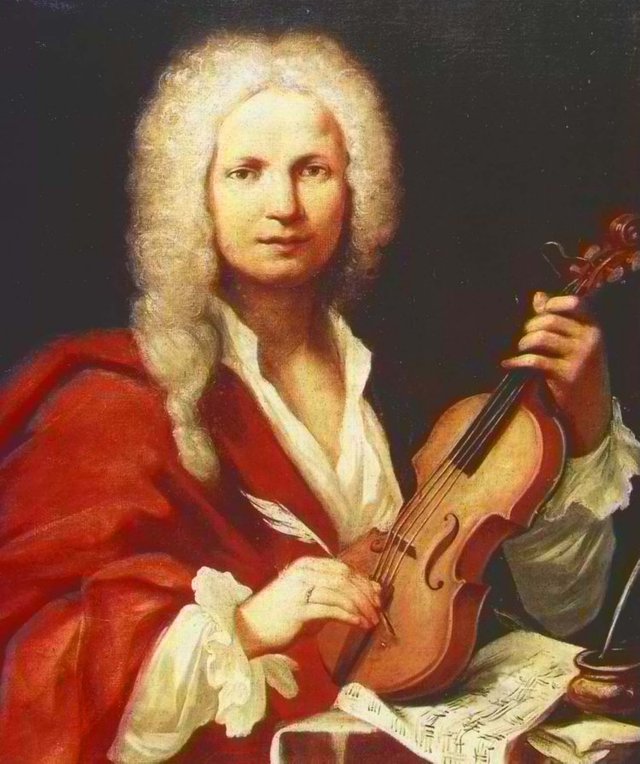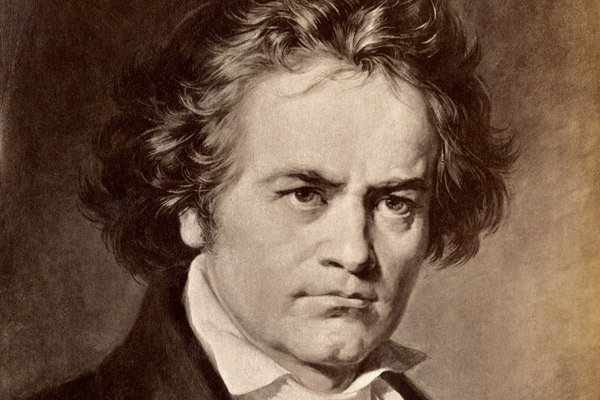Classical Badasses: Vivaldi - The Four Seasons (Favorite Performance Video) + Light and Polite Music Theory Breakdown
Classical Badasses Vol. 1

Rock n Roll is a relatively new cultural invention, but the attitude and ferocity that inspire it have been around since the beginning of human culture. I’m talking about those badasses throughout history that break the rules so succinctly that the rules bend to keep up. I’m talking about virtuoso composer and violinist Antonio Vivaldi.

His most famous work (at least nowadays) is four concertos in a row called The Four Seasons, with each concerto representing scenes from each respective season, which was not a cool thing to do in the Baroque era. Composition in this day and age was considered a craft, not unlike carpentry or sword making. Pieces were titled after their function and the key they are in. Functions include dances like waltzes and allemandes (get up and move) or song forms like sonata or rondo (look how impressive my brain abilities are). Music from this era almost never alluded to some alternate hypothetical meaning (chill the hell out and imagine some stuff). Almost 100 years later, even Beethoven took criticism for including programmatic material in his Pastoral Symphony (how can those possibly be birds? They’re clearly flutes).

Of course, due to the era, we have no recordings or videos of this kickass hero, so I’ll draw attention to another hyper talented physics crusher, Julia Fischer. The following is a beautiful rendition of The Four Seasons filmed at the National Botanic Garden of Whales with each season taking place in a different part of the enormous greenhouse wonderland that makes up the facility and unabashedly including all of nature’s singing in the recordings. Here are the parts with links to the scores followed by the video.
Antonio Vivaldi (1678 - 1741)
The Four Seasons (1723)
Concerto No.1 in E major, Op.8, RV 269, "La primavera" (Spring) - 0:22
i. Allegro
ii. Largo e pianissimo sempre
iii. Allegro pastorale
Concerto No.2 in G minor, Op.8, RV 315, "L'estate" (Summer) 9:43
i.Allegro non molto
ii. Adagio e piano -- Presto e forte
iii. Presto
Concerto No.3 in F major, Op.8, RV 293, "L'autunno" (Autumn) - 19:51
i. Allegro
ii. Adagio molto
iii. Allegro
Concerto No.4 in F minor, Op.8, RV 297, "L'inverno" (Winter) - 30:00
i. Allegro non molto
ii. Largo
iii. Allegro
What to Listen For
First off, if you’re in a hurry, my favorite full concerto is Summer (9:43) and my favorite movement is the first section in Winter (30:00). I’m a sucker for the dark stuff. If you have time, though, absorb the whole thing. It was sitting in someone's brain and is still alive and unscathed 300 years later. Blows my mind.
- Vivaldi makes great use of dynamics (the general intensity of the piece at a given time). He generally oscillates the same theme between soft and loud very quickly and suddenly. It keeps things interesting and makes the performance feel more alive.
- He also maneuvers themes through their major and minor counterparts. In terms of music theory, major and minor have defined technical definitions. For the time being, though, it’d be better to understand these terms in a more intuitive way: major sounds joyous and minor sounds somber and dark. Listen for them!
- Concertos, like the stories in books and films, have a general shape to them that isn’t exactly driven by a set of rules so much as natural tendencies. The first movement of each concerto tends to be fast and strong, the second tends to be slower and muted, and the third tends to be bigger, faster, and stronger, often with an impressive cadenza at the end.
- See if you can hear what Vivaldi is going for on these seasonal portraits. The only one that seems to differ greatly from our current cultural association is Summer: it sounds pretty hopeless. Imagine a past where summer isn’t about getting out of school so much as dealing with heat without air conditioning or convenient running water.
that's interesting, thanks
Hi @soundreasoning, thank you for your informative commentary on Vivaldi's work. It was especially interesting to read about how radical it would have been for Vivaldi to have the concertos abstractly representing seasons of the year, instead of pursuing a practical function. The performance by Julia Fischer in the embedded youtube was also very enjoyable.
This article has been shared on the Steemit's Best Classical Music facebook page and included in our latest roundup post, Steemit's Best Classical Music Roundup [Issue #6].
I enjoyed your descriptions of the pieces, plus as a lover of really old music, myself, I think people need to listen to more of it. For some reason, "classical" music has a stigma as being elitist and stuffy, but it was the popular music of the day a lot of the time, and very passionate and authentic.
Summer is so inspirational. I'm a metal guy that writes a lot of power metal, so this always gets the creative juices flowing. Would love to see you connect some of this stuff to people like Yngwie Malmsteem, or Syu from Galneryus. That would be a really fun read from you. Keep it up. This is one of my favorite series on steemit.